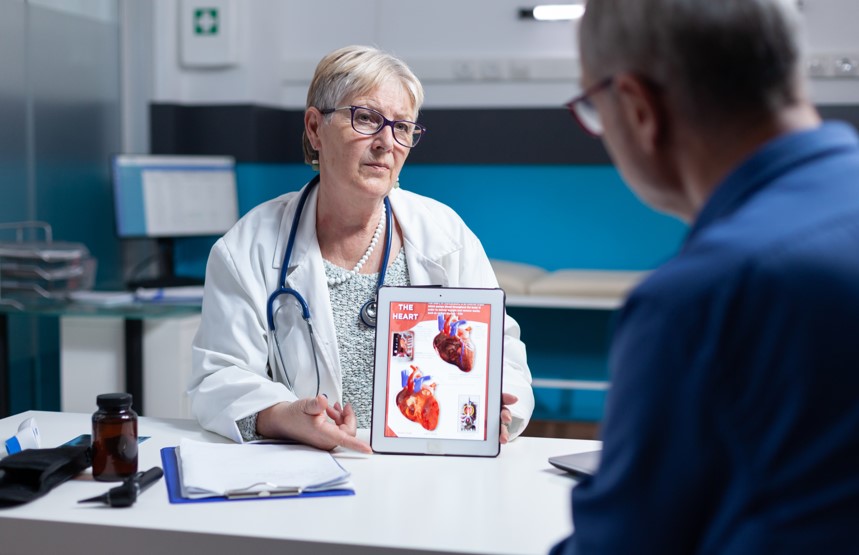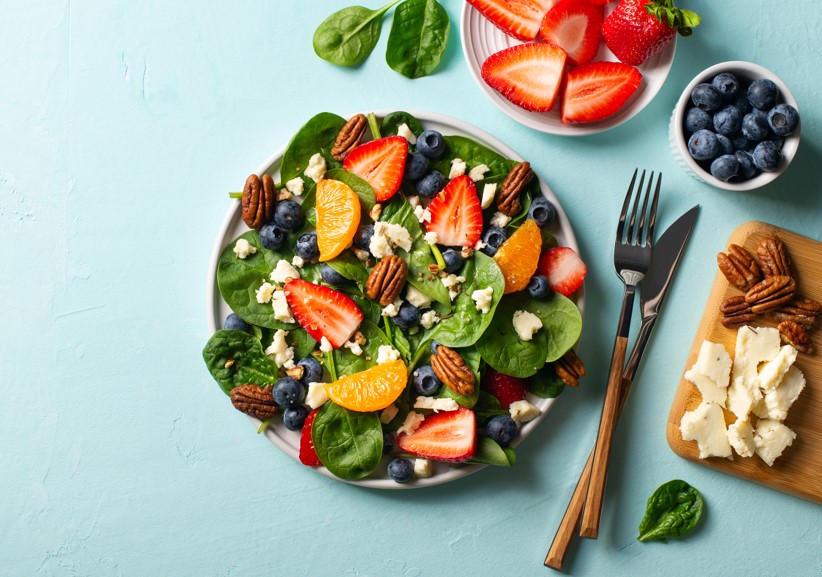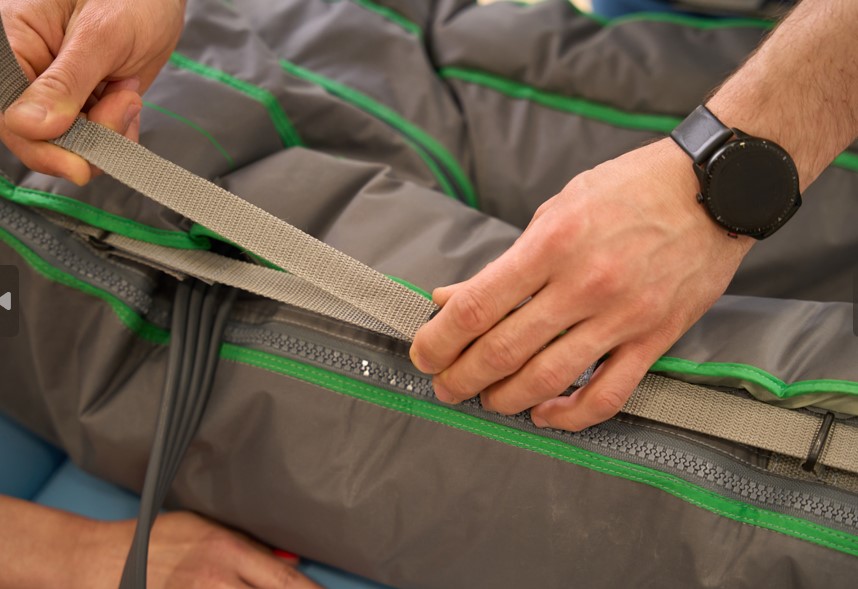As we age, maintaining good circulation becomes increasingly crucial for overall health. Good blood flow supports vital organ functions, enhances mobility, and contributes to mental clarity. However, seniors, especially those with limited mobility, face unique challenges in sustaining optimal circulation. This guide offers practical tips designed for both active seniors and those who are less mobile, underscoring the importance of circulation and providing actionable steps to improve it.
Practical Tips for Enhancing Circulation
This guide will walk through five practical tips to boost circulation, tailored to accommodate various levels of mobility:
- Gentle Exercises: Tailored movements that increase blood flow without requiring extensive mobility.
- Dietary Adjustments: Nutrient-rich foods that promote vascular health and improve blood quality.
- Hydration: The role of water in maintaining blood volume and easing blood flow.
- Assistive Devices: Tools and garments that help improve circulation through gentle compression or stimulation.
- Routine Checks: Regular monitoring of health indicators to adjust care plans effectively.

Gentle Exercises: Enhancing Circulation with Minimal Strain
For seniors with limited mobility, engaging in gentle exercises can significantly improve circulation, even without vigorous activity. These exercises are designed to increase blood flow safely and comfortably, focusing on movement within one’s ability range. Here are some practical exercises and tips:
- Seated Leg Lifts
- How to Do It: Sit in a sturdy chair with your back straight. Slowly lift one leg at a time to a comfortable height, hold for a few seconds, and then lower it back down.
- Benefits: This exercise helps activate the leg muscles without putting stress on the joints, promoting blood flow in the lower extremities.
- Arm Circles
- How to Do It: While seated or standing, extend your arms straight out to the sides at shoulder height. Slowly make small circles with your arms, gradually increasing the size of the circles.
- Benefits: Arm circles help improve circulation in the upper body and can also enhance shoulder flexibility.
- Ankle Rotations
- How to Do It: Sit down and extend your legs. Rotate your ankles in clockwise and then counterclockwise directions.
- Benefits: Ankle rotations help improve blood flow in the feet and lower legs, areas where blood can pool especially in less mobile seniors.
- Neck Stretches
- How to Do It: Sit upright and gently tilt your head towards one shoulder, hold for a few seconds, and repeat on the other side. You can also look up towards the ceiling and then bring your chin towards your chest.
- Benefits: These movements enhance blood flow in the neck and upper shoulders, areas that can become stiff and tense, particularly if mobility is generally reduced.
- Chair Yoga
- How to Do It: Many yoga poses can be adapted to sitting, such as seated cat-cow stretches or spinal twists.
- Benefits: Chair yoga can increase flexibility, decrease stress, and improve circulation through gentle stretching and mindful breathing.
Tips for Safe Exercise
- Warm-Up: Always begin with a light warm-up to gradually increase your heart rate and blood flow to muscles.
- Consistency is Key: Regularity is more important than intensity. Try to incorporate these exercises into your daily routine.
- Comfortable Clothing: Wear loose, comfortable clothing that doesn’t restrict blood flow.
- Stay Hydrated: Drinking water before and after exercise helps maintain healthy blood volume and circulation.
- Consult Healthcare Providers: Before starting any new exercise regimen, especially if you have health concerns like heart disease or diabetes, consult with a healthcare provider.

Dietary Adjustments: Foods for Vascular Health and Improved Blood Quality
A nutritious diet plays a critical role in maintaining good circulation, especially for seniors. By incorporating specific foods, one can enhance vascular health and improve blood quality. Here’s a detailed look at what to eat and why these choices matter:
Foods to Include
Leafy Greens
- Examples: Spinach, kale, Swiss chard
- Why They Help: These vegetables are high in nitrates, which the body converts into nitric oxide, a compound that helps dilate blood vessels and improve blood flow.
Fatty Fish
- Examples: Salmon, mackerel, sardines
- Why They Help: Rich in omega-3 fatty acids, fatty fish help reduce inflammation in the body and prevent blood clotting, thus improving circulation.
Berries
- Examples: Blueberries, strawberries, blackberries
- Why They Help: Berries are loaded with antioxidants, including flavonoids, which have been shown to enhance heart health by improving blood flow and preventing clotting.
Beets
- Why They Help: Beets are another excellent source of nitrates, boosting nitric oxide in the body and enhancing blood flow.
Nuts and Seeds
- Examples: Almonds, walnuts, flaxseeds, chia seeds
- Why They Help: These are good sources of vitamin E, which helps prevent blood clotting. They also have healthy fats that improve arterial health.
Whole Grains
- Examples: Oatmeal, whole wheat, quinoa
- Why They Help: Rich in fiber, whole grains help lower cholesterol levels and maintain blood vessel health.
Dark Chocolate
- Why They Help: The flavonoids in dark chocolate can stimulate the lining of the arteries to produce nitric oxide, which relaxes the arteries and improves blood flow.
Tips for Dietary Success
- Balanced Portions: Incorporate these foods into a balanced diet that includes a variety of nutrients. Overeating even healthy foods can have negative effects.
- Consistency: Regular consumption of these foods can lead to long-term benefits for blood circulation and heart health.
- Hydration: Drink plenty of water throughout the day. Hydration is crucial for maintaining the volume of blood for optimal circulation.
- Limit Salt and Sugar: Excessive salt can lead to increased blood pressure, and too much sugar can lead to weight gain and increased heart disease risk.
- Spices for Circulation: Include spices like turmeric and ginger in your diet. These spices have anti-inflammatory properties and can improve blood circulation.

Hydration: Essential for Maintaining Blood Volume and Easing Blood Flow
Hydration is a key factor in promoting good circulation. Water makes up about half of the human body and plays a crucial role in maintaining blood volume, which is necessary for proper blood flow. Here are the most relevant points on hydration’s impact on circulation:
- Blood Volume Maintenance: Adequate water intake ensures that the blood isn’t too thick, which helps in maintaining an easier and smoother flow through the vessels.
- Toxin Removal: Water helps flush out toxins and waste products from the body, reducing the risk of blood clots that can hinder circulation.
- Optimal Organ Function: Every organ, including the heart and kidneys, relies on proper hydration to function effectively. The heart pumps blood more efficiently when the body is well-hydrated.
Quick Tips for Adequate Hydration
- Aim for about 8 glasses of water per day, though needs can vary based on health, lifestyle, and environment.
- Include fruits and vegetables with high water content in your diet for additional hydration.
- Regularly monitor the color of your urine as a quick hydration check; pale yellow indicates good hydration.
Proper hydration is straightforward yet powerful in maintaining good circulation and overall health for seniors.
Assistive Devices: Enhancing Circulation Through Compression and Stimulation
Assistive devices, including specialized garments and tools, play a crucial role in improving circulation, especially for seniors with limited mobility. These devices work by applying gentle pressure or providing stimulation that promotes blood flow in targeted areas. Here’s an overview of some effective assistive devices for circulation:
Compression Garments
- Types: Compression socks, stockings, and sleeves.
- Function: These garments apply mild pressure to the legs, arms, or other body parts. This compression helps veins and muscles move blood more efficiently toward the heart and prevents blood from pooling in the lower extremities, which is common in people who are less mobile.
- Benefits: They are particularly useful for managing conditions like varicose veins, reducing swelling, and preventing deep vein thrombosis.
Electronic Circulation Enhancers
- Types: Electric muscle stimulators and circulation boosters.
- Function: These devices use electrical impulses to stimulate muscle contractions in the legs and feet. The contractions help pump blood back to the heart and can be particularly beneficial for individuals who are unable to perform regular physical exercise.
- Benefits: Improves blood circulation, reduces swelling, and alleviates pain caused by poor circulation.
Sequential Compression Devices
- Types: Pneumatic compression boots and sleeves.
- Function: These devices consist of inflatable garments that wrap around the limbs. An attached pump inflates and deflates the garments, mimicking the natural muscle contractions that occur during physical movement, thus helping push blood back towards the heart.
- Benefits: Often used in medical settings, these devices are great for reducing the risk of blood clots and managing lymphedema.
Tips for Using Assistive Devices
- Proper Fit: Ensure that any compression garment fits properly. Ill-fitting compression garments can either be ineffective or cause discomfort and potential circulatory blockage.
- Consultation with Healthcare Providers: It’s important to consult with a healthcare provider before starting to use any new assistive device, particularly for those with existing health conditions.
- Regular Use: For maximum benefit, use these devices as recommended by a healthcare professional. Consistency is key in maintaining and improving circulation.
Assistive devices offer a practical solution for improving circulation, especially for seniors whose mobility is not what it used to be. These tools help maintain an active circulation system, which is crucial for overall health and well-being.

Routine Checks: Key to Effective Circulation Management
Regular monitoring of health indicators is essential for seniors, especially those with limited mobility or chronic health issues. Routine checks help in promptly identifying any changes or declines in health, allowing for timely adjustments in care plans. Here’s an overview of the importance of routine checks and what they typically involve:
Importance of Routine Health Checks
- Early Detection: Routine checks can detect circulation problems before they become severe, such as early signs of venous insufficiency or peripheral artery disease.
- Monitoring Progress: They provide a way to track the effectiveness of current health strategies, such as dietary changes, exercise regimens, or the use of assistive devices.
- Customizing Care: Based on check results, healthcare providers can tailor interventions to meet the unique needs of each senior, enhancing both the effectiveness and safety of the care plan.
Key Health Indicators to Monitor
- Blood Pressure: High blood pressure is a major risk factor for heart disease and stroke, both of which can significantly affect circulation. Regular monitoring can help manage this risk.
- Heart Rate: Observing heart rate can give insights into cardiovascular health and overall circulation efficiency.
- Blood Sugar Levels: For diabetics, controlling blood sugar levels is crucial as high sugar can damage blood vessels and impair circulation.
- Cholesterol Levels: High levels of bad cholesterol can lead to plaque buildup in arteries, impeding blood flow and increasing heart disease risk
- Physical Examinations: Regular check-ups with a doctor can help assess the vascular condition and detect any potential circulation issues, such as swollen ankles or feet, which might indicate poor blood flow.
Tips for Effective Routine Checks
- Schedule Regular Appointments: Seniors should visit their healthcare provider for a full check-up at least once a year, or more frequently if recommended.
- Use of Home Monitoring Devices: Equip seniors with home monitoring tools like blood pressure cuffs and glucose meters to keep daily tabs on vital signs.
- Keep a Health Diary: Maintaining a record of daily health-related observations can help doctors make informed decisions about care adjustments.
- Involve Caregivers: Caregivers should be trained to recognize signs that indicate a need for medical attention and know when to consult healthcare professionals.










